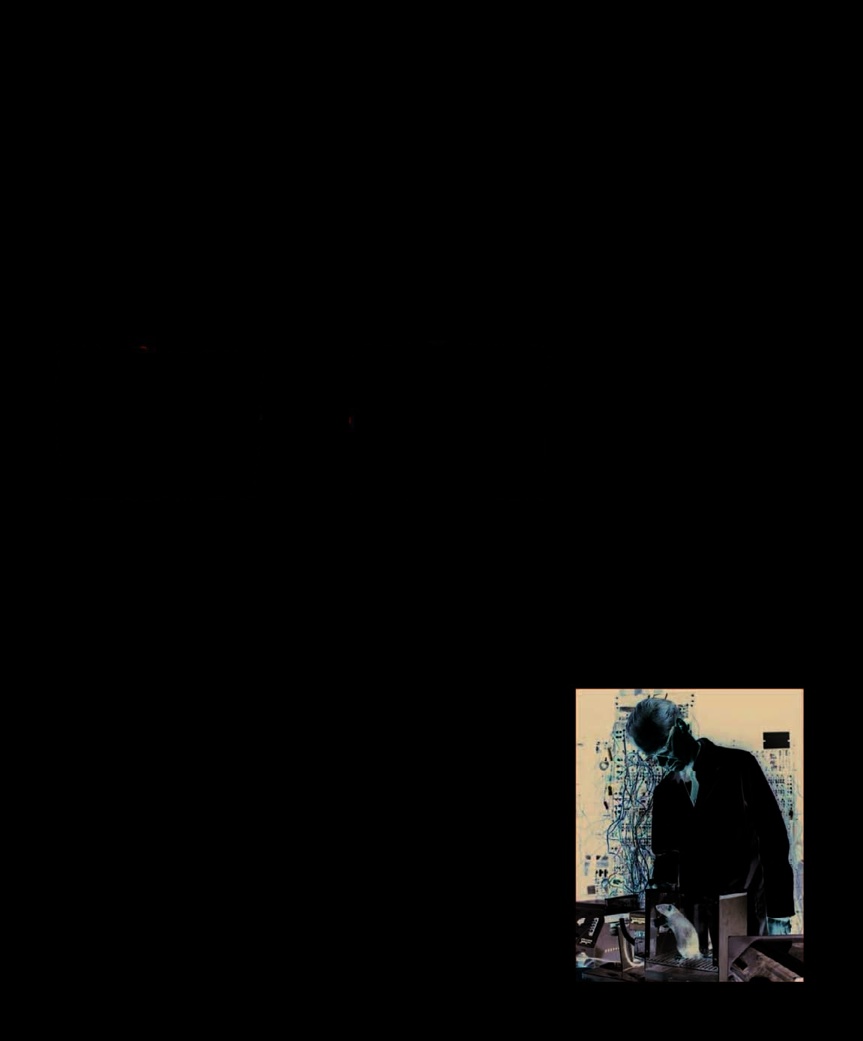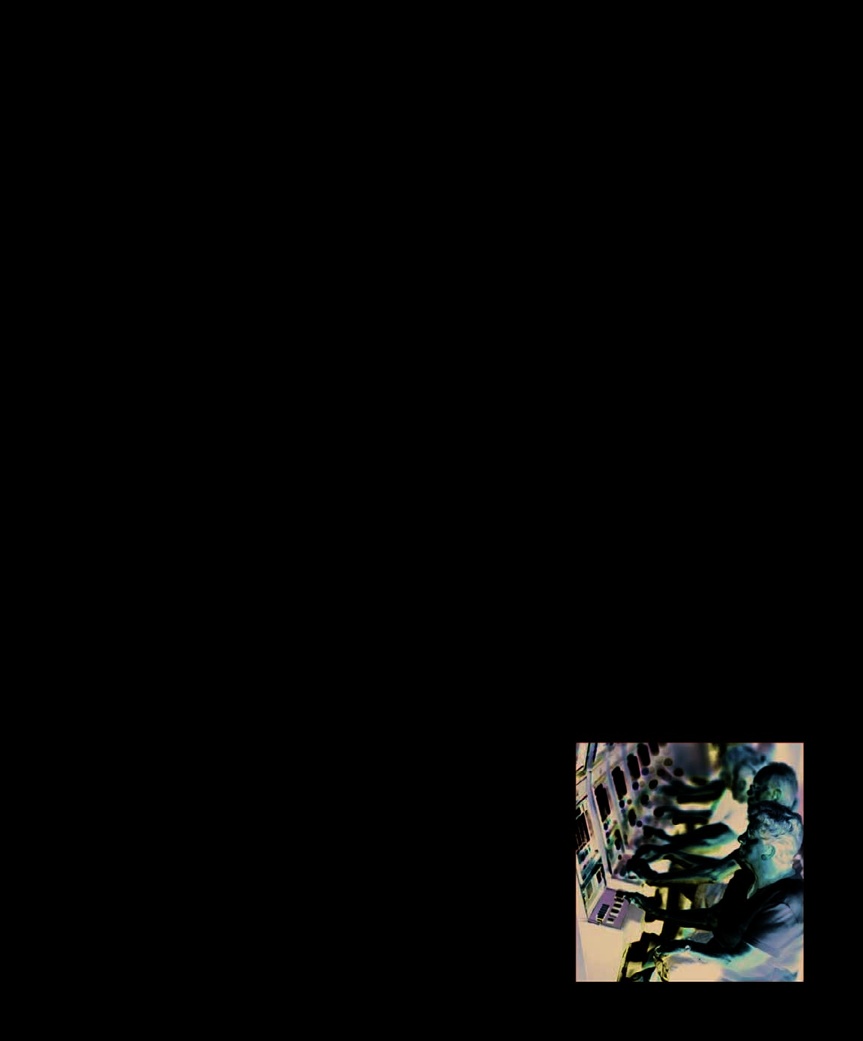The Psychology Book (26 page)
Read The Psychology Book Online
Authors: Unknown

1960s
Albert Bandura’s social
discipline in its own right.
reached the conclusion that they
learning theory is influenced
Skinner had once contemplated
must be utterly subjective, and
by radical behaviorism.
a career as an author, but he had
did not exist at all separately from
little time for the philosophical
the body. In Skinner’s opinion,
B.F. Skinner
Burrhus Frederic Skinner was
the rest of his life. He was
born in 1904 in Susquehanna,
diagnosed with leukemia in
Pennsylvania. He studied English
the 1980s, but continued to
at Hamilton College, New York,
work, finishing an article from
intending to be a writer, but soon
his final lecture on the day he
realized that the literary life was
died, August 18, 1990.
not for him. Influenced by the
works of Ivan Pavlov and John B.
Key works
Watson, he studied psychology at
Harvard, gaining his doctorate in
1938
The Behavior of Organisms:
1931 and becoming a junior fellow.
An Experimental Analysis
He moved to the University of
1948
Walden Two
Minnesota in 1936, and from
1953
Science and Human
1946 to 1947 ran the psychology
Behavior
department at Indiana University.
1957
Verbal Behavior
In 1948, Skinner returned to
1971
Beyond Freedom and
Harvard, where he remained for
Dignity

BEHAVIORISM 81
See also:
William James 38–45 ■ Ivan Pavlov 60–61 ■ John B. Watson 66–71 ■ Zing-Yang Kuo 75 ■
Joseph Wolpe 86–87 ■ Albert Bandura 286–91 ■ Noam Chomsky 294–97
press the bar accidentally, or
simply out of curiosity, and as a
consequence receive some food.
An action
,
Over time, the rat learned that food
such as a rat
appeared whenever the bar was
pressing a
pressed, and began to press it
button…
purposefully in order to be fed.
Comparing results from rats given
the “positive reinforcement” of food
for their bar-pressing behavior with
those that were not, or were
presented with food at different
rates, it became clear that when
food appeared as a consequence
…leading to an
…
has a
of the rat’s actions, this influenced
increased probability
consequence
,
its future behavior.
of that behavior
such as the
Skinner concluded that animals
and
encouraging a
delivery of food…
are conditioned by the responses
repeat
of the action.
they receive from their actions
and environment. As the rats
explored the world around them,
some of their actions had a positive
consequence (Skinner was careful
the way to carry out psychological
from the results of actions. As with
to avoid the word “reward” with its
research was through observable
so many great insights, this may
connotations of being given for
behavior, rather than through
appear to be self-evident, but it
“good” behavior), which in turn
unobservable thoughts.
marked a major turning point in
encouraged them to repeat that
Although a strict behaviorist
behaviorist psychology.
behavior. In Skinner’s terms,
from the outset of his career,
an “organism" operates on its
Skinner differed from earlier
Skinner boxes
environment, and encounters a ❯❯
behaviorists in his interpretation of
While working as a research fellow
conditioning, in particular, the
at Harvard, Skinner carried out a
principle of “classical conditioning”
series of experiments on rats, using
as described by Pavlov. While not
an invention that later became
disagreeing that a conditioned
known as a “Skinner box.” A rat
response could be elicited by
was placed in one of these boxes,
repeated training, Skinner felt that
which had a special bar fitted on
this was something of a special
the inside. Every time the rat
case, involving the deliberate,
pressed this bar, it was presented
artificial introduction of a
with a food pellet. The rate of
conditioning stimulus.
bar-pressing was automatically
To Skinner, it seemed that
recorded. Initially, the rat might
the consequences of an action
were more important in shaping
Skinner boxes
were one of many
behavior than any stimulus that
ingenious devices that the psychologist
had preceded or coincided with it.
created, giving him total control over
He concluded from his experiments
the environment of the animals whose
that behavior is primarily learned
behavior he was observing.

82 B.F. SKINNER
Positive reinforcement
can stimulate particular patterns
of behavior, as Skinner demonstrated by placing a rat in
one of his specially designed boxes, fitted with a lever or bar.
Pellets of food appeared every time the animal pressed the
bar, encouraging it to perform this action again and again.
stimulus (a food pellet), which
occurring, if the reinforcing
shock as “punishment,” a distinction
reinforces its operant behavior
stimulus was then stopped, there
that became increasingly important
(pressing on the bar). In order to
was a decrease in the likelihood of
as he examined the implications of
distinguish this from classical
that behavior occurring.
his research.
conditioning, he coined the term
Skinner continued making his
Negative reinforcement was not
“operant conditioning;” the major
experiments ever more varied and
a new concept in psychology. As
distinction being that operant
sophisticated, including changes of
early as 1890, William James had
conditioning depends not on a
schedule to establish whether the
written in
Principles of Psychology
:
preceding stimulus, but on what
rats could distinguish and respond
“Animals, for example, awaken in
follows as a consequence of a
to differences in the rate of delivery
a child the opposite impulses of
particular type of behavior. It is also
of food pellets. As he suspected,
fearing and fondling. But if a child,
different in that it represents
the rats adapted very quickly to
in his first attempts to pat a dog,
a two-way process, in which an
the new schedules.
gets snapped at or bitten, so that
action, or behavior, is operating
the impulse of fear is strongly
on the environment just as much
Negative reinforcement
aroused, it may be that for years to
as the environment is shaping
In later experiments, the floors of
come no dog will excite in him the
that behavior.
the Skinner boxes were each fitted
In the course of his experiments,
with an electric grid, which would
Skinner began to run short of food
give the rats an unpleasant shock
pellets, forcing him to reschedule
whenever they were activated. This
the rate at which they were being
allowed for the investigation of the
given to the rats. Some rats now
effect of negative reinforcement on
received a food pellet only after
behavior. Again, just as Skinner
they had pressed the bar a number
avoided the word “reward,” he was
of times repeatedly, either at fixed
careful not to describe the electric
intervals or randomly. The results of
this variation reinforced Skinner’s
Winning at gambling
often boosts
original findings, but they also led
the compulsion to try again, while
to a further discovery: that while
losing lessens it, just as changes in the
a reinforcing stimulus led to a
rate at which Skinner’s rats were fed
greater probability of a behavior
made them modify their behavior.

BEHAVIORISM 83
impulse to fondle again.” Skinner
was to provide the experimental
evidence for this idea.
Positive reinforcement
As expected, Skinner found that
whenever a behavior resulted in the
negative consequence of an electric
shock, there was a decrease in that
behavior. He went on to redesign
the Skinner boxes used in the
experiment, so that the rats inside
were able to switch off the
electrified grid by pressing a bar,
which provided a form of positive
reinforcement arising from the
removal of a negative stimulus. The
results that followed confirmed
Skinner’s theory—if a behavior
leads to the removal of a negative
likely to avoid doing so when adults
Skinner’s pigeon
experiments proved
stimulus, that behavior increases.
are around. The child may modify
that the positive reinforcement of being
However, the results also
his behavior, but only so far as it
fed on the achievement of a task helped
to speed up and reinforce the learning
revealed an interesting distinction
enables him to avoid punishment.
of new behavior patterns.
between behavior learned by
Skinner himself believed that
positive reinforcement and behavior
ultimately all forms of punishment
elicited by negative stimuli. The
were unsuitable for controlling
further in his article
The Selection
rats responded better and more
children’s behavior.
by Consequences,
written for the
quickly to the positive stimuli (as
journal
Science
in 1981.
well as the removal of negative
Genetic predisposition
In 1936, Skinner took up a post
stimuli), than when their behavior
The “shaping” of behavior by
at the University of Minnesota,
